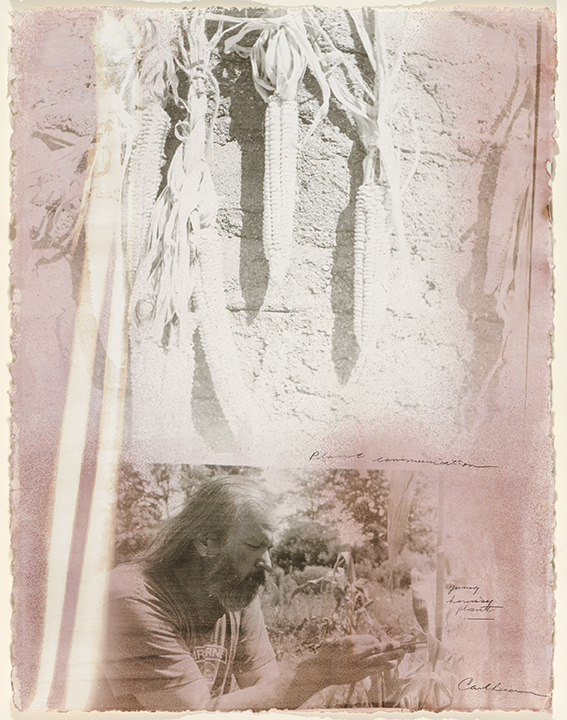From the Collection: Carl Beam
September 30, 2022
Written by Anong Beam
In the spring of 1992, my father Carl Beam was finishing and exhibiting the Columbus Project. Upon its completion, he launched into another massive project: moving home to the land he grew up on in M’Chigeeng First Nation where he and my mother Ann Beam (a potent feminist artist in her own right), researched and built an adobe house and studio.
This labour of love sparked his next series of work. From 1992-1999 he worked on food sustainability, Indigenous crop knowledge, hominy and the three sisters, gardens, and his Ojibwe language (which had been damaged at Garnier residential school during his youth). At this time, gardens were not common in our community. His enthusiasm for ecologically sound practices in modern life led to the creation of multiple gardens, and for the artist, a cultural renaissance.

Collection of the Art Gallery of Peterborough.
Purchased with the assistance of the Canada Council for the Arts Acquisition program, 1998.
This work shows the artist holding the soft fronds of a young hominy plant. Above it, mature dried hominy hanging on the adobe clay wall of his home, ready to be processed. The work itself is a silver gelatin print. Beam would acquire the silver halide gel used to make photographs and apply it to his favourite handmade paper from Montreal. Initially watercoloured with a soft pink ground, he then sensitized and applied the photo collage. Working outside using the dark of night on Manitoulin he would perform photo processes without light pollution.
Hominy was a nutritional staple for the Anishnaabek and other Indigenous groups. A magical thing happens when hominy corn is dried and processed in the traditional way. Boiled and mixed with maple ash, the kernel phosphoresces and then puffs into a plump tasty morsel; nutty and almost like a potato and an acorn. When this happens, the corn is transformed nutritionally in a process that releases niacin.
Too much regular corn in a diet can cause Pellagra disease marked by dementia, diarrhea and dermatitis. For two centuries spaniards and colonists in the americas suffered this disease without adopting the magical process of hominy. For Carl, this was an example of the chasm between European knowledge and Indigenous knowing, which marked the fields of most of the enquiries in his artistic practice.
Posted in Permanent Collection
